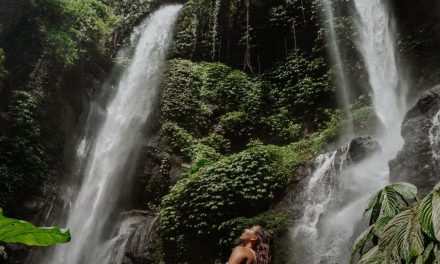Ubud, often referred to as the cultural heart of Bali, is a treasure trove of traditional ceremonies, breathtaking landscapes, and vibrant local life. This charming town offers an engaging backdrop for photographers seeking to capture the essence of Balinese culture. If you’re passionate about photography and want to delve into Ubud’s rich traditions, join me on a journey where I’ll share personal anecdotes, practical tips, and insights into photographing traditional ceremonies in Ubud.
Immersing Yourself in the Culture
When I first arrived in Ubud, I was immediately struck by the vivid colors, intricate details, and the palpable spiritual energy that permeated the air. My goal was simple: to capture the essence of Balinese life through my lens. But as I soon found out, photographing traditional ceremonies in Ubud is much more than just clicking a button.
One afternoon, while I was enjoying a cup of kopi Bali at a local warung, I overheard a group talking about an upcoming temple ceremony. Instantly, my ears perked up; it was the perfect opportunity! I introduced myself and ended up being invited to join them. That’s the beauty of Ubud—locals are genuinely warm and welcoming, and experiences seem to unfold organically if you let them.
Participating vs. Observing
As a photographer, it’s crucial to blend into the environment. I learned that becoming a part of the ceremony can lead to more authentic photographs. At one ceremony in Pura Taman Saraswati, I participated in the rituals—offering flowers and joining the locals in prayers. Engaging fully allowed me to capture tender moments: the smiles, the reverent postures, and the colorful offerings laid out in front of the temple.
When you immerse yourself in the culture, you’ll also find it easier to connect with your subjects. Remember to politely ask for permission before snapping portraits—taking the time to chat can bring out genuine smiles and candid moments.
Essential Tips for Capturing the Essence of Ubud
1. Research the Ceremonies: Before arriving, check community calendars or local guides for upcoming ceremonies. Each event has its own significance—be it a cremation ceremony, a temple festival, or a Ngaben—and knowing a bit about it beforehand can make your photos more impactful.
2. Gear Up Wisely: While it’s tempting to bring a plethora of gear, I found that my trusty DSLR and a 50mm lens were all I really needed. The simplicity allowed me to move freely, and I could shoot in low light without a flash during evening ceremonies. Consider a wide-angle lens for capturing the atmosphere and a zoom lens to catch details without intruding on personal moments.
3. Respect the Culture: Respect is fundamental in Ubud. Many ceremonies involve spiritual elements, so always be mindful of your surroundings. Dressing appropriately—covering your shoulders and knees—goes a long way in showing respect. I still remember feeling a little out of place at my first ceremony until I donned a sarong and sash like the locals; from then on, the atmosphere felt much more welcoming.
4. Look for Emotion: One thing I’ve learned is that the most powerful photographs often come from capturing emotion. Whether it’s a child’s wonder during a procession or the solemnity of an elder during prayer, these moments tell poignant stories. Staying patient and observant often rewards you with remarkable interactions.
A Memorable Encounter
I’ll never forget a particular ceremony at Pura Dalem in Ubud, where vibrant processions poured into the streets. The aroma of incense mingled with the sounds of gamelan music filled the air, creating a backdrop that is still vivid in my mind. As I wandered through the crowd, I noticed a grandmother draping her granddaughter with a ceremonial sash. The love in that moment struck me, and I quickly snapped a few photos without intruding.
After the ceremony, I approached her to share the captured moment. We shared a warm exchange, and she gifted me a small flower offering as a token of thanks. It was moments like these that not only filled my camera with stories but also warmed my heart.
Finding Your Unique Voice
While technical skills are important, what makes your photography stand out is your unique voice. Whether it’s through vibrant colors, intimate portraits, or expansive landscapes, let your personal style shine through. My journey through Ubud’s ceremonies has taught me to embrace both the structure of photography and the spontaneity of life.
Practical Advice for the Aspiring Photographer
– Engage with Local Photographers: Connect with fellow photographers in Ubud. They can offer valuable insights and tips based on their experiences and can often guide you to lesser-known ceremonies.
– Practice Patience: Some of the best moments come when you least expect them. Spend time observing rather than preparing to shoot; often, the scene will unfold right before your eyes.
– Edit Wisely: Post-processing is where you can enhance your unique style. Don’t be afraid to be creative with your edits, but remember to stay true to the essence of what you captured.
Conclusion
Photographing traditional ceremonies in Ubud offers not just the chance to create beautiful images but also to connect deeply with the rich culture of Bali. Through genuine interaction, respect, and an open heart, you can find magic both in your photographs and experiences. Whether you’re collecting stories to tell or memories to cherish, Ubud’s traditional ceremonies will leave an indelible mark on your photography journey. So grab your camera, embrace the vibrant culture, and let your photos tell the stories of Ubud that your heart remembers.






